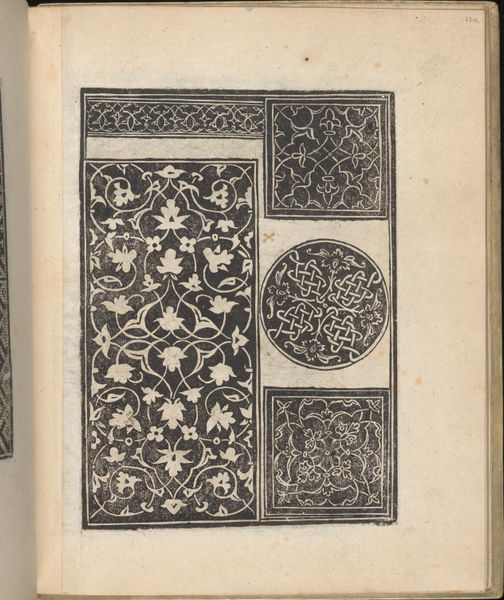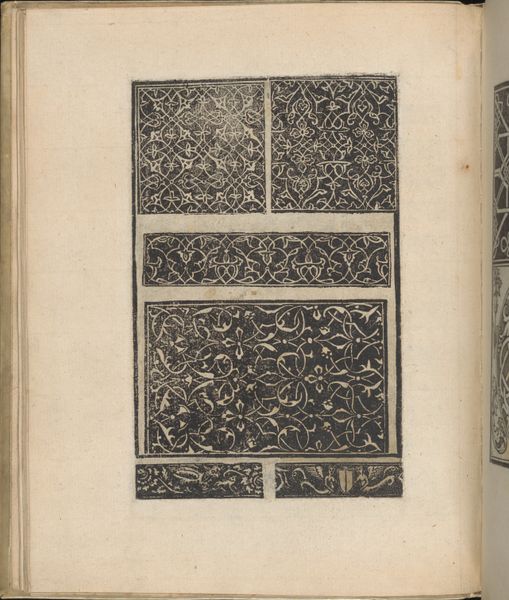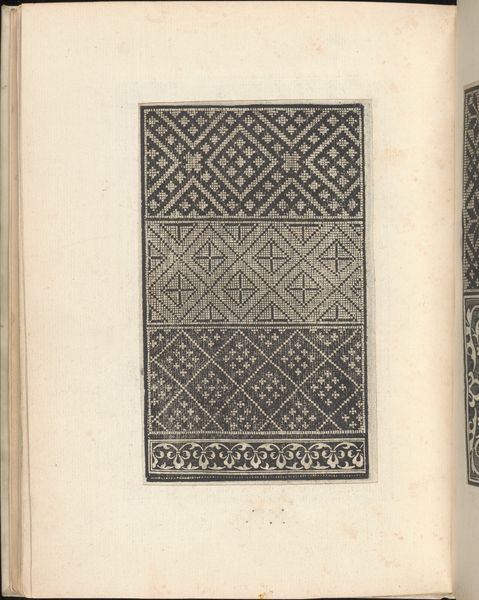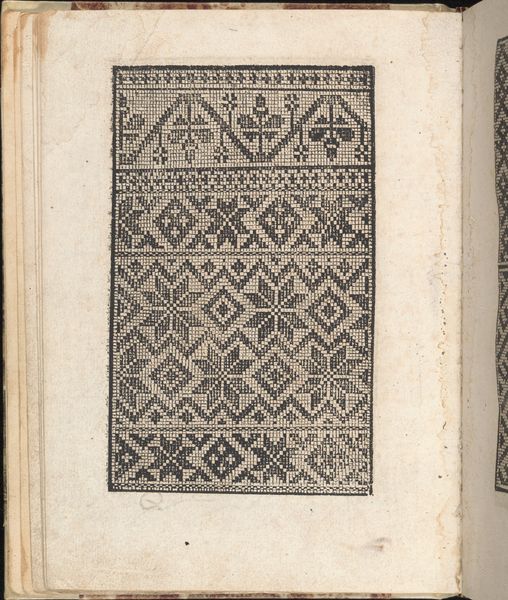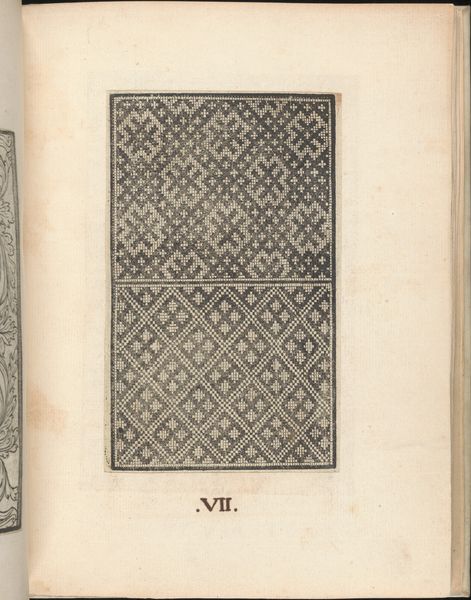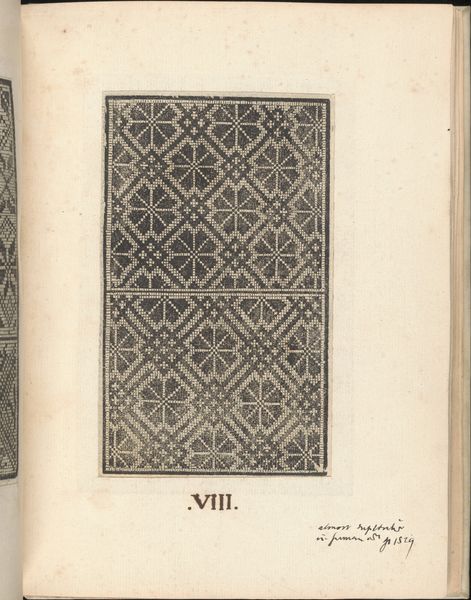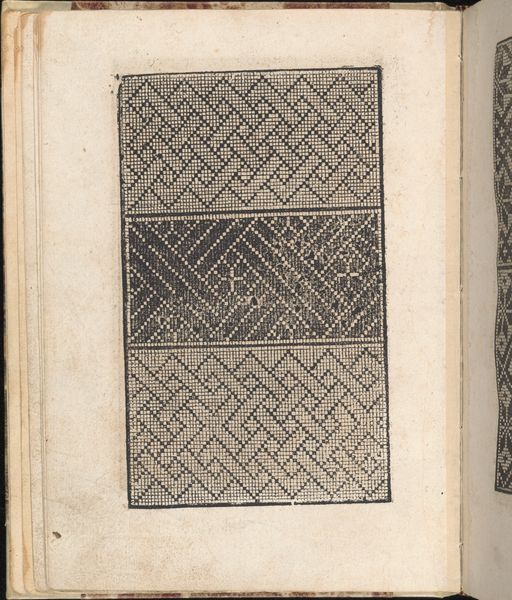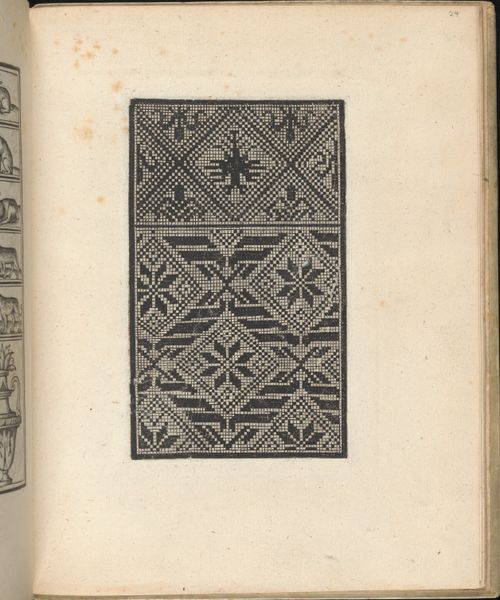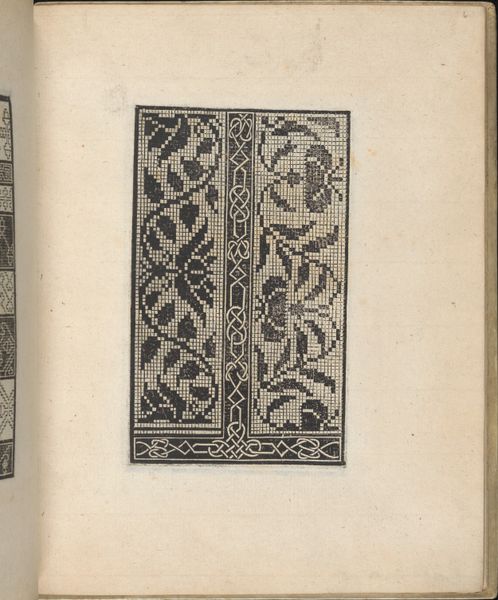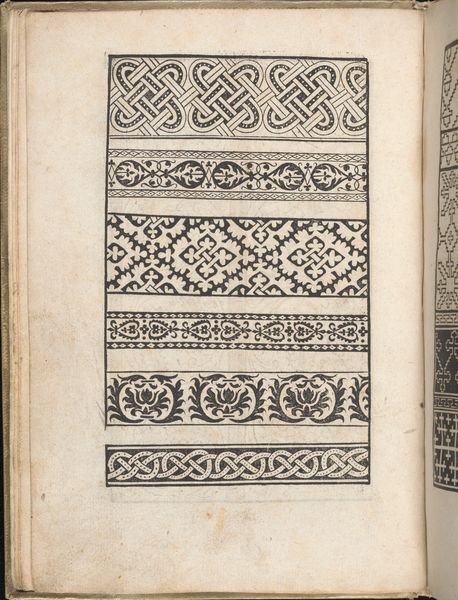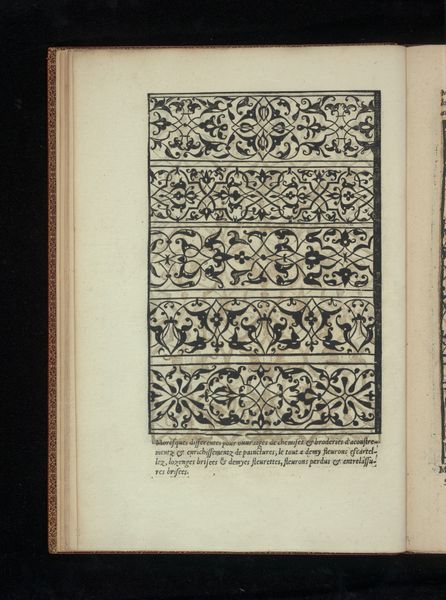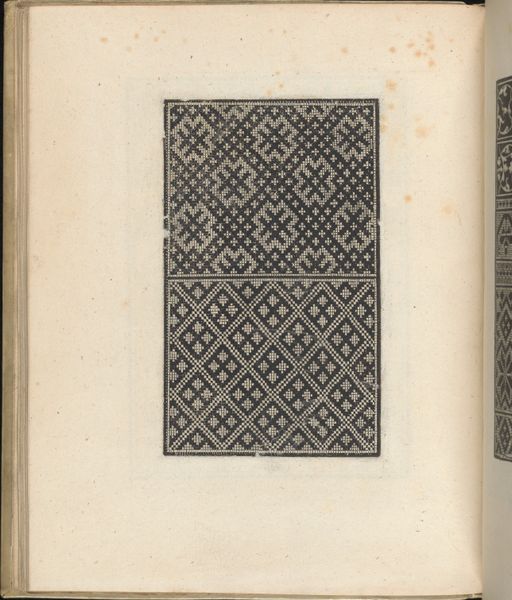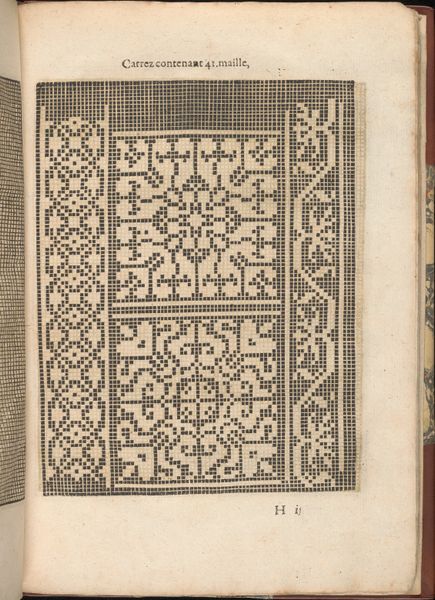
drawing, graphic-art, ornament, print
#
drawing
#
graphic-art
#
ornament
# print
#
11_renaissance
#
geometric
#
italian-renaissance
Dimensions: 9 5/16 x 7 1/4 x 15/16 in. (23.7 x 18.4 x 2.4 cm)
Copyright: Public Domain
Editor: So, this page is from Nicolò Zoppino's "Esemplario di lavori," printed in 1529. It’s a drawing, a graphic art print, full of these intricate geometric ornaments. It's Italian Renaissance. I’m really struck by the difference in textures between the patterns. What stands out to you in terms of its making? Curator: What’s fascinating is that this print exists as part of a larger shift in how designs were disseminated. Consider the material conditions: the rise of printmaking allowed patterns, once the closely-guarded secrets of guilds or individual workshops, to be cheaply reproduced and widely distributed. Think about how that impacted textile production. Editor: Right, I guess that means more people had access to new design ideas. But were they actually *making* things themselves, or just copying patterns? Curator: That's the question! The “Esemplario” wasn't just about aesthetics, it was a manual, a tool for production. We need to consider the labour involved. These patterns were meant to be translated into material goods – embroideries, weavings. Were they being executed by skilled artisans, or by less experienced hands simply following instructions? What kind of social change are we talking about when mass produced patterns enter a marketplace? Editor: It’s interesting to think of this page not as a precious artwork, but almost like a mass-produced instruction manual. It changes my view completely. Curator: Exactly. It challenges that hierarchy, suggesting we consider all forms of making and production as culturally significant. Now, go and create something with a completely different tool.
Comments
No comments
Be the first to comment and join the conversation on the ultimate creative platform.
